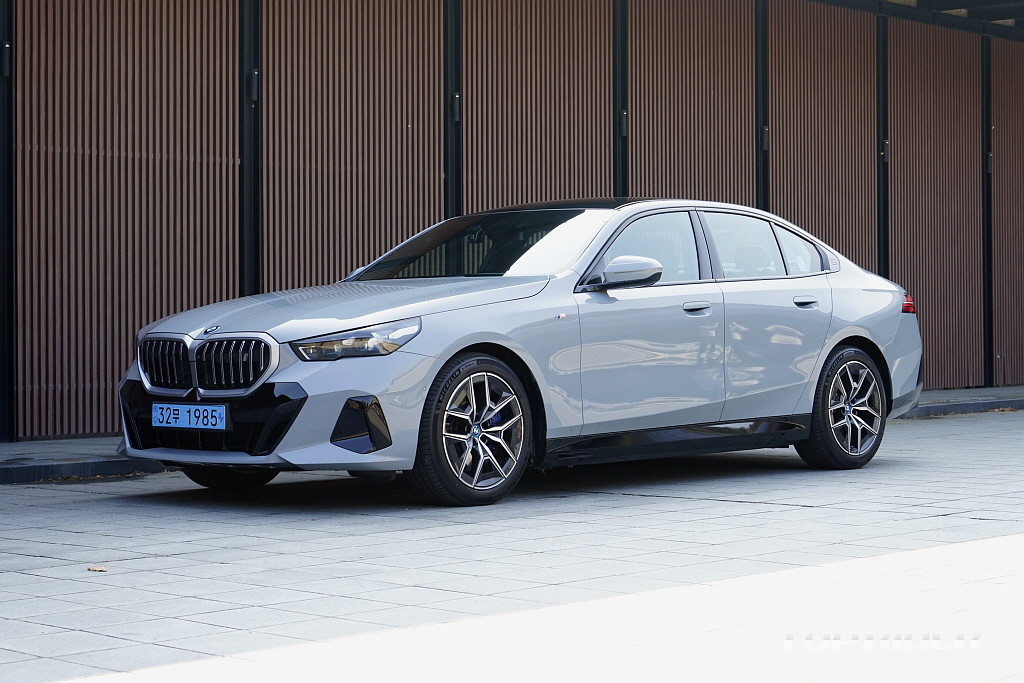
I test drove the BMW i5 eDrive40 M Sports. It is the middle model among the three trims of the i5 eDrive40 and has a specification of 96.9 million won. The i5 eDrive40 received a conservative domestic certification of 384 km of driving range and 4.1 km/kWh of fuel efficiency, but in actual driving, it recorded a combined fuel efficiency of 7.5 km/kWh and a driving distance of 609 km, which is impressive.
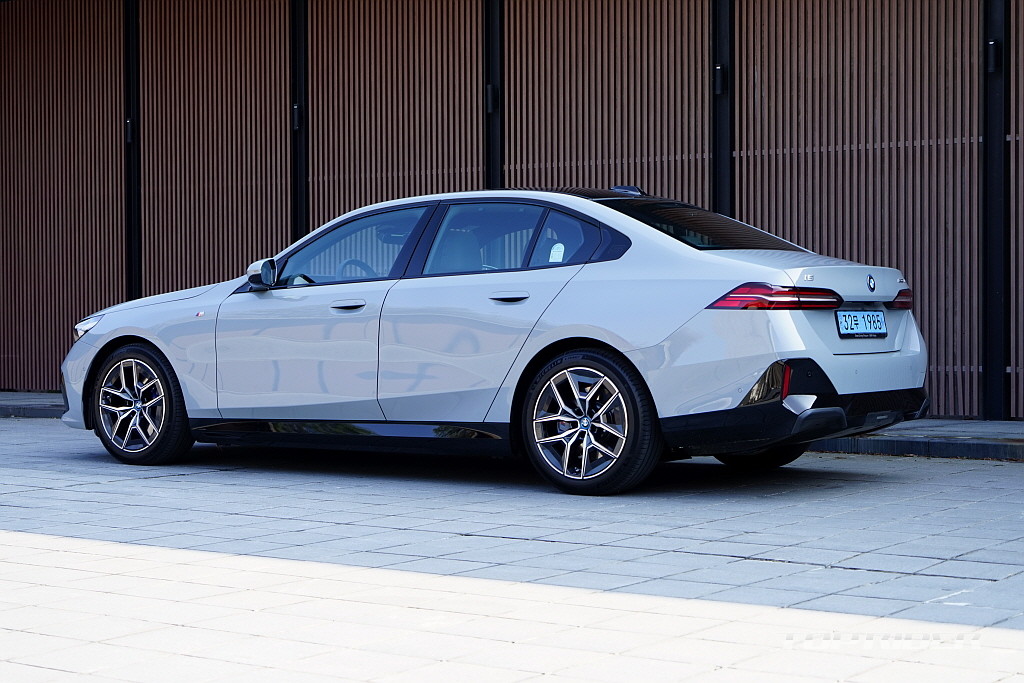
BMW introduced the new 5 Series (G60) in Korea for the first time. Most consumers are already aware that the 5 Series is BMW Korea’s flagship model and can be purchased at the most reasonable price in the world. The price increase is less than 3% as we introduce a new, fully-changed car that is close to a full package.

Recently, in the domestic automobile industry, huge price increases for each model year change, partial change, or full change are taken for granted, and BMW Korea’s pricing like this can be embarrassing to competitors. It is also important to remember that the Korean market is active in reinvesting profits.

BMW launched the new 5 Series in Korea for the first time in the world and introduced gasoline, diesel, and electric vehicles, with about 10 detailed trims. In particular, they are putting effort into the electric car i5, and the price difference between the cheapest 520i (KRW 68.8 million) and i5 eDrive40 (KRW 93.9 million) is about KRW 25 million.

Even excluding tax benefits such as 1.4 million won in acquisition tax reduction, 25 million won is 520,000 won/month for 48 months of operation, which is something to consider when calculating fuel cost savings. In addition, electric vehicles come with financial benefits such as cost savings due to various oil replacements, highway toll discounts, and parking lot discounts.

The test car is the i5 eDrive40 MSP model. In the exterior design, unlike the basic trim, there are aggressive front and rear bumpers, black details including black high-gloss window lines, 19-inch M aerodynamic M bicolor wheels, and interior 3-spoke wheels and silver M aluminum inlay, and options.
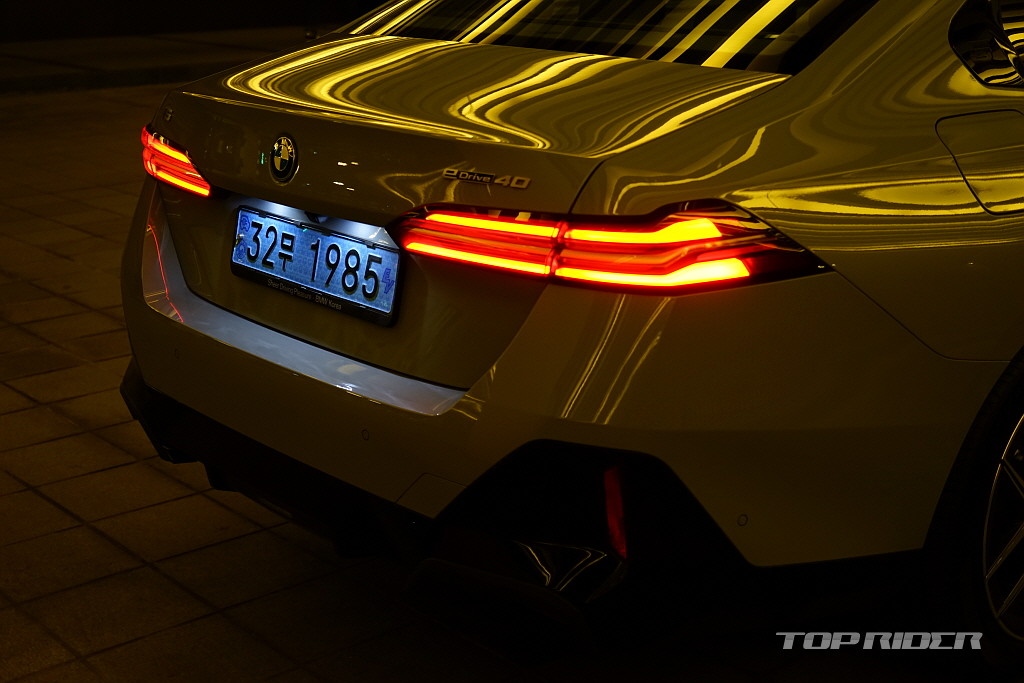
The body of the new 5 Series has the same design as the internal combustion engine and the electric vehicle i5. It is characterized by less heterogeneity as it does not apply a design specifically for electric vehicles. The car body was significantly increased through generation changes, with a total length of 5060mm (+95), a total width of 1900mm (+30), a total height of 1515mm (+35), and a wheelbase of 2995mm (+20).

BMW described the new 5 Series as ‘more dynamic and sporty than the 7 Series with the goal of creating the most elegant BMW.’ The goal is to provide the comfortable ride quality of the i7 and the agility of the 3 Series. In fact, similar to the changes in the new 7 Series, the design emphasizes presence by increasing the overall height.

The extent of change inside the interior is significant. Starting with the new 7 Series, the completely new design of the horizontal dashboard, curved display, and crystal interior is impressive. It is said that the completely changed interior design tone and emotional elements such as the interaction bar are popular among women.
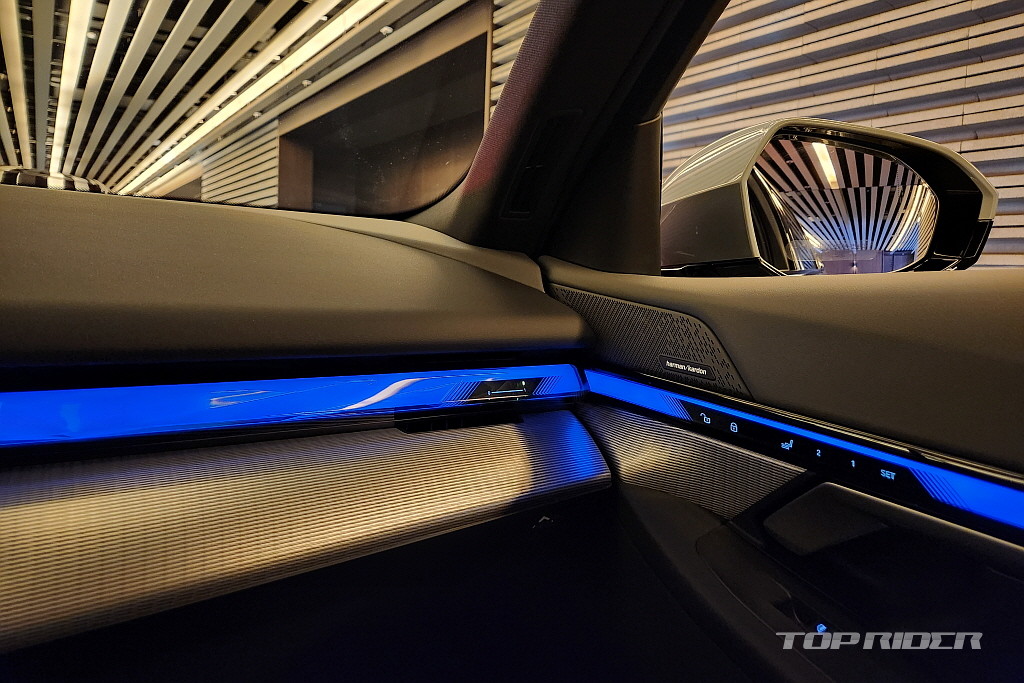
A crystal iDrive controller in collaboration with the Swarovski brand, a large metal detail speaker, a hidden fabric speaker reminiscent of home audio, an air vent with 5 levels of individual airflow control, a clear display, and an intuitive UI that has passed the transition period. is attractive.
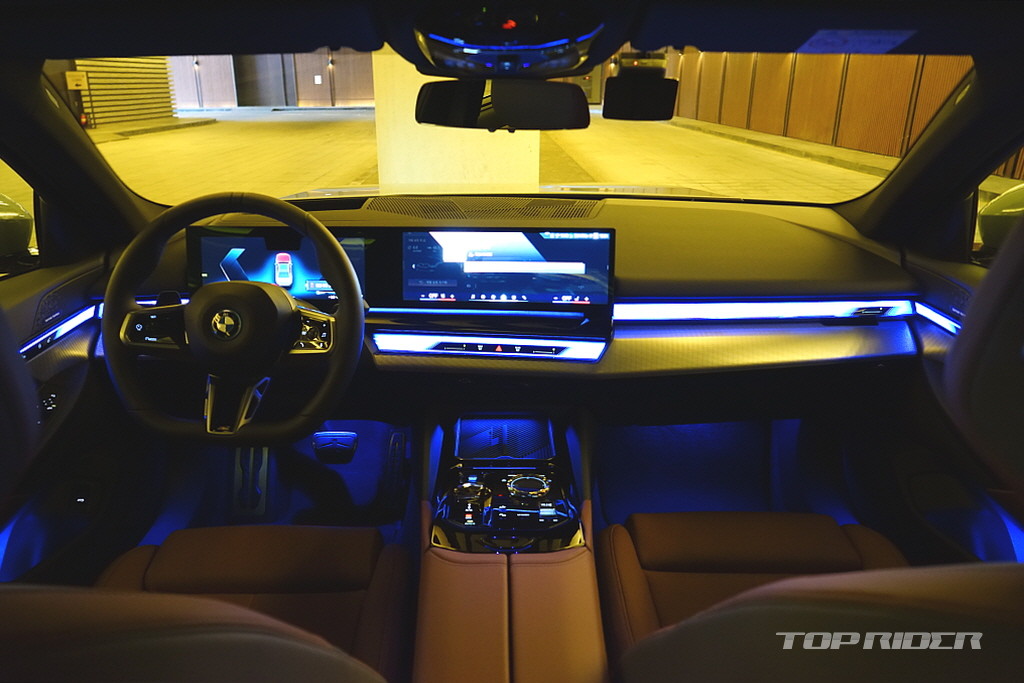
The i5 eDrive40 is equipped with BMW’s 5th generation eDrive drivetrain and an 81.2kWh battery, and the rear wheel electric motor delivers power. The maximum output is 340 horsepower, the maximum torque is 40.8kgm, and the empty vehicle weight is 2250kg. Acceleration to 100 km/h from a standstill is 6.0 seconds, and the maximum speed is 193 km/h. The driving distance per trip is 384 km (392 in the city, 375 on the highway).
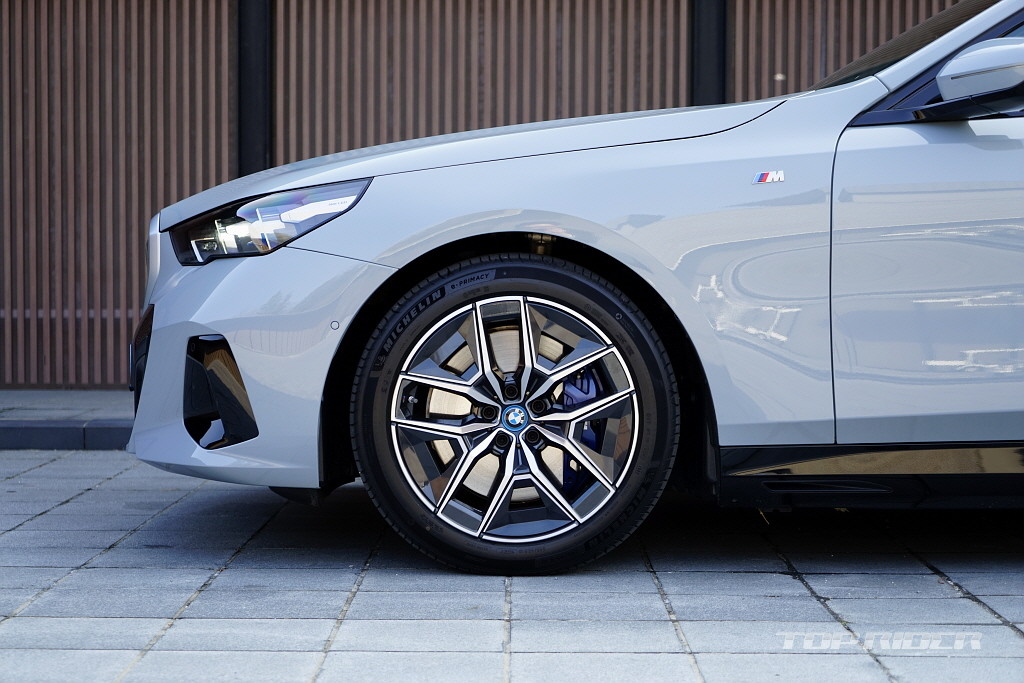
The i5 eDrive40 has secured a range of 497 to 582 km based on European WLTP. Even considering the European measurement environment, the difference is too large, and the reason is that 21-inch wheels were applied during domestic certification. Domestic configurations: 19-inch wheels are standard for the i5 eDrive40 and eDrive40 MSP, and 20-inch wheels are standard for the i5 eDrive40 MSP PRO.

The test drive was conducted on a round-trip course between Samseong-dong, Seoul and Gapyeong-gun, Gyeonggi-do, similar to daily driving. To conclude, the cumulative average energy consumption is 7.5km/kWh, the 132km driving course including the winding course uses 23% of the electricity from 99%, the remaining driving distance of 76% is 482km, and the converted driving distance is 609km.
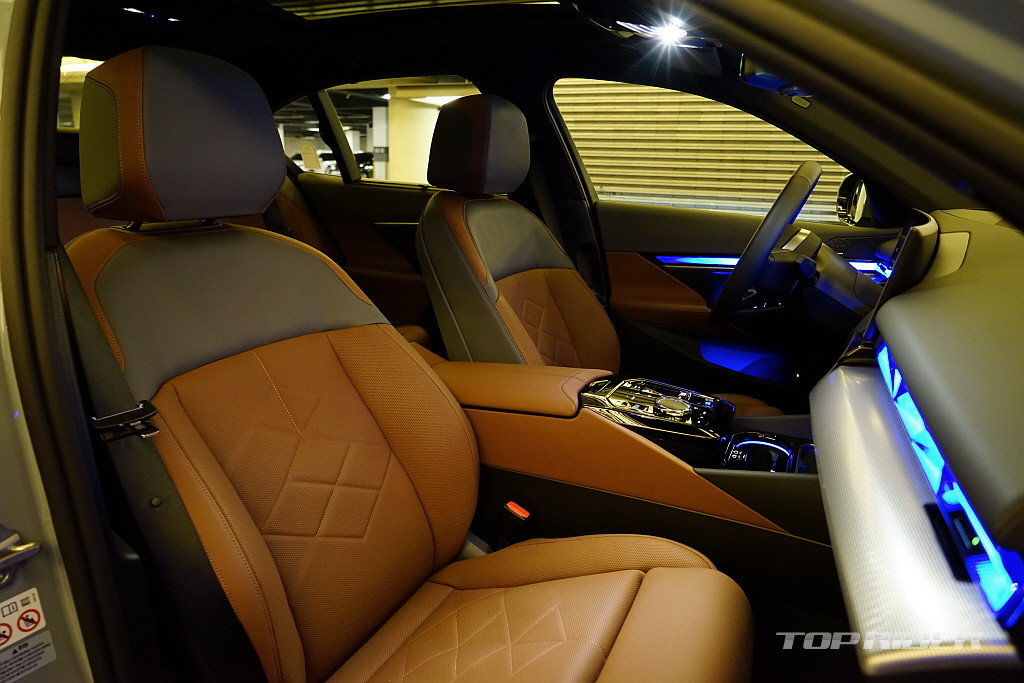
Generally, when driving mildly according to the road flow, the driving distance of an electric vehicle increases beyond the specifications, but in the case of the i5 eDrive40, the increase in driving distance exceeded expectations. This is even more surprising because the tire grip is good and the aerodynamic characteristics of the car body design are not high.
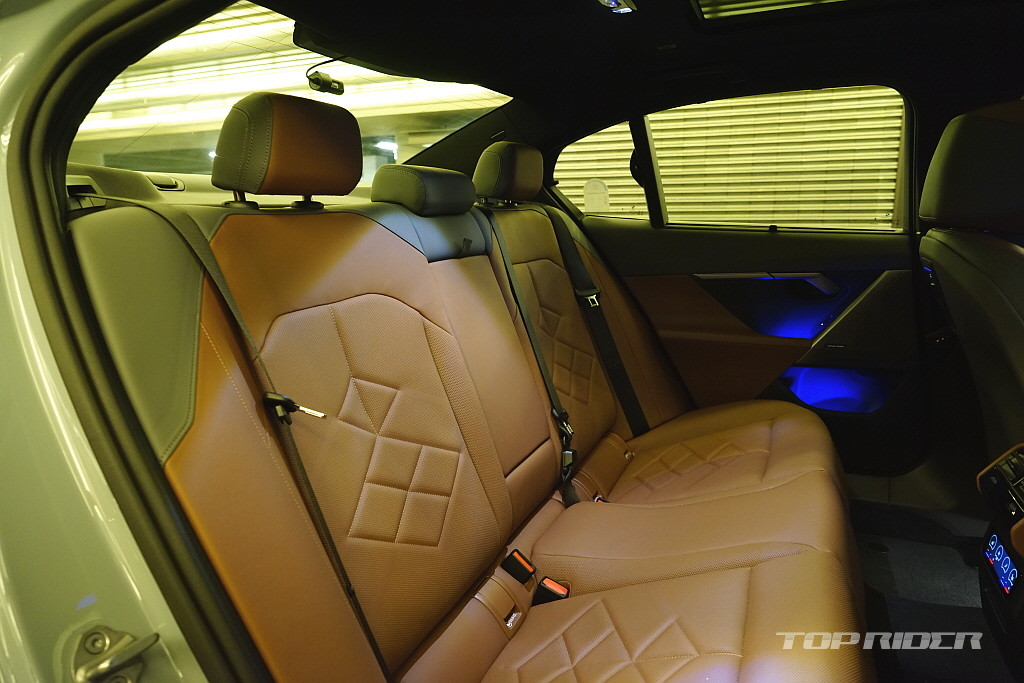
The i5’s ride quality is closer to soft and relaxed rather than hard or tight. It reminds me of the new 7 Series (G70) that was released first, and the air suspension applied as standard to the rear wheel improves the completeness of the suspension. When steering, it’s light enough that you don’t feel the weight of 2.2 tons, and this is the first time I’ve seen a setup like this.
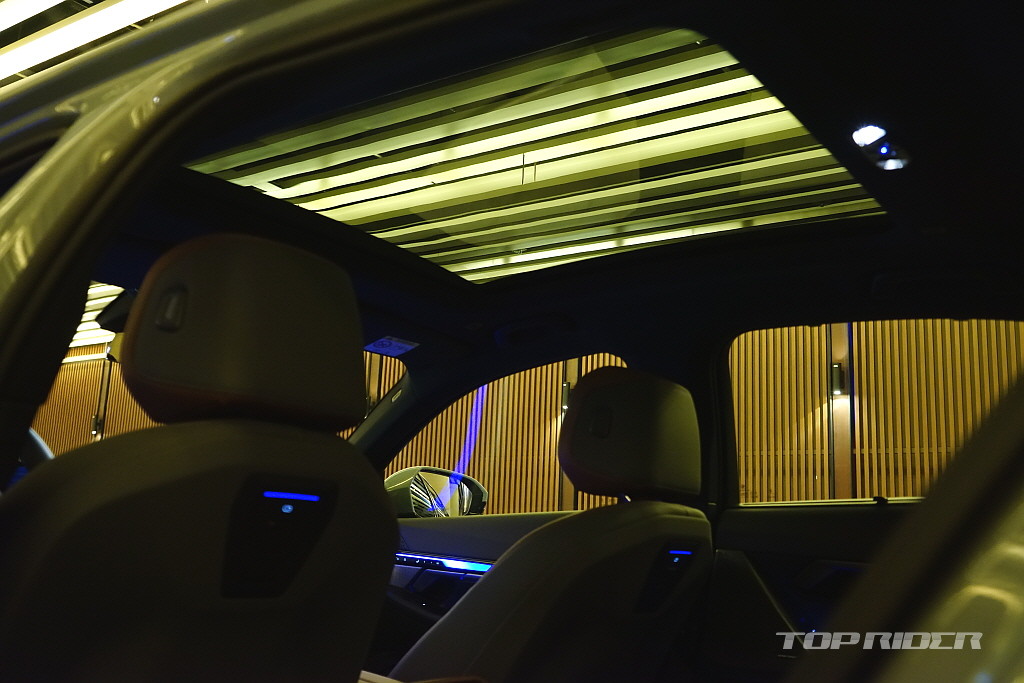
BMW’s explanation of ‘the most elegant BMW’ and ‘more dynamic than the 7 Series’ is clearly understood. Even though it is an electric vehicle with strong instantaneous torque, it achieves linear acceleration. The situation of repeated acceleration and deceleration is implemented like an internal combustion engine car, so there is less dizziness. It’s a subtle part, but it’s difficult to explain in detail.

The sound system is a Harman Kardon specification, and although it is a lower Harman Kardon system than the Bowers & Wilkins of the higher model i5 eDrive40 MSP PRO, the output and resolution are at a high level. It appears that BMW has put a lot of effort into launching a fully-changed new model lineup, including the new 7 Series and the new 5 Series.
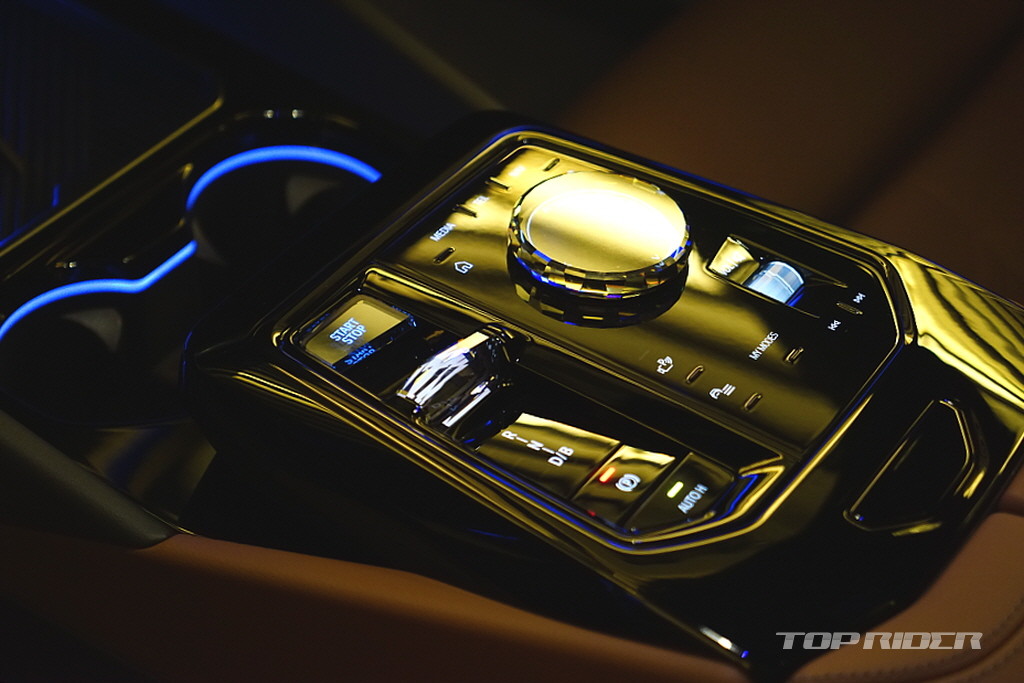
Adaptive regenerative braking recognizes the speed of the vehicle as it accelerates, and the distance and speed difference with the vehicle in front, and very naturally goes back and forth between coasting and step-by-step regenerative braking to participate in the vehicle’s speed. The process is very natural. When using a driving assistance device, the vehicle automatically changes lanes just by turning on the turn signal.

BMW’s overall efforts in the i5 eDrive40 were focused on convincing drivers of internal combustion engine vehicles of electric vehicles. Unlike new brands that force us to adapt to the new thing called electric vehicles, our long-term car making experience and know-how has resulted in an electric vehicle that anyone can adapt to with the least sense of heterogeneity.
